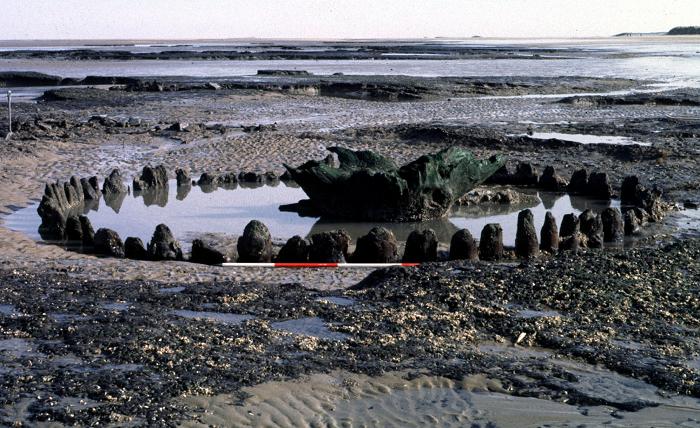Seahenge: A Subaquatic Monument of the European Bronze Age
Seahenge, which is also known as Holme I, was a prehistoric monument located in the village of Holme-next-the-Sea, near Old Hunstanton in the English county of Norfolk.
A timber circle with an upturned tree root in the center, Seahenge was apparently built in the 21st century BC, during the early Bronze Age in Britain. Contemporary theory is that it was used for ritual purposes.
The structure was perceived to be under threat from damage and erosion from the sea – as such it was fully excavated. This involved the removal of the timbers, a program of stratigraphic recording, and environmental sampling.
The structure comprised an elliptical circumference of fifty-five large oak posts and one smaller upright timber, set around an inverted oak tree.
Maximum diameter of 6.78m, with the tree, set slightly southwest of the center.

The central tree had two holes cut through the trunk on opposite sides, with a length of honeysuckle rope passed through the holes and tied in a knot.
A maximum of twenty-five trees was used to build the structure. Evidence of woodworking was recovered, including felling, trimming, splitting, and flattening.
422 pieces of wood debris were found, including woodchips. Toolmarks recorded from a total of fifty-nine possible tools; the maximum number of tools used is probably nearer 51.
The toolmarks are probably the largest assemblage of Early Bronze Age toolmarks yet recorded in Britain.
The structure was built at a single point in time. Dendrochronological dating of fifty-five samples revealed that the timber circle was constructed in the spring or early summer of 2049 BC, during the Early Bronze Age.
The environmental analysis demonstrated that the structure was built on a salt marsh. During the Bronze Age, freshwater reed swamp and alder carr spread over the saltmarsh and the monument itself.
Two timbers (context 35=37 and 65) may have been the first timbers set in place. These were placed on a southwest to northeast alignment, in the approximate direction of the midsummer rising sun and midwinter setting sun. This may have been deliberate or unintentional.
All but one of the circumference timbers were placed with their bark facing outwards. The timber with the split face facing outwards must have had significance.
The structure has been interpreted in various ways. These include a monument to mark the death of an individual, the death of a tree or the regenerative failure of trees, and the commemoration of an event, life, or the culmination of a celebration or festival.
The fragmentary remains of the timber circle are now in the King’s Lynn Museum.
